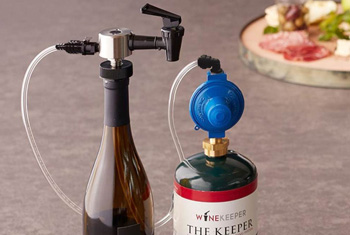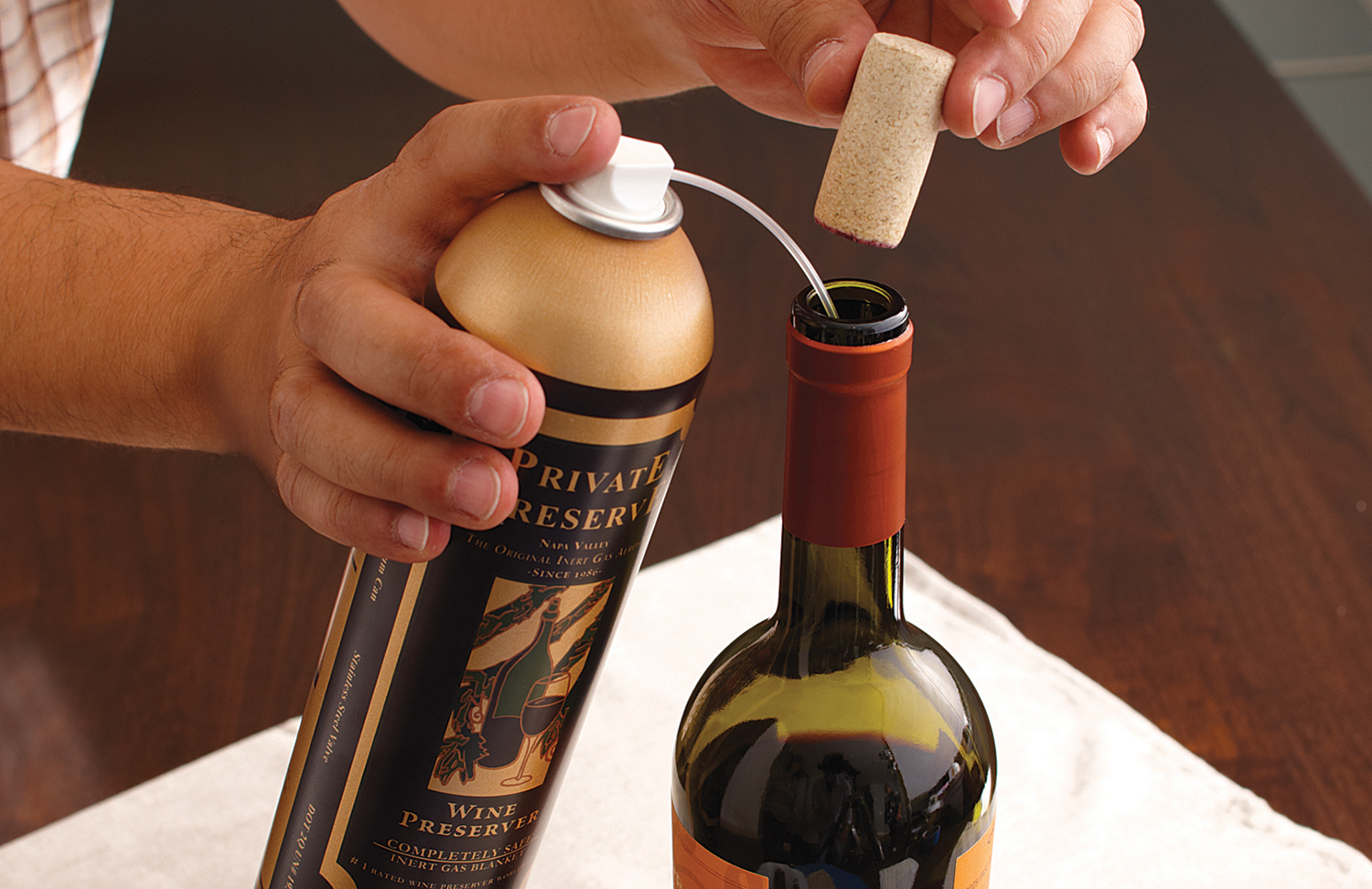

Gases such as Nitrogen and Argon are often used in wine preservation.
Unlike a vacuum system which sucks air out of the bottle, gas displaces the air that is in contact with exposed surfaces of the wine. These gases are flavorless, odorless, non-toxic and non-flammable. The gas is heavier than air and settles on top of the exposed wine surface. Since these gases contain no oxygen and are entirely inert, there is nothing that interacts with the wine.
After using this type of wine preserver, quickly recork the bottle with the original cork or a non-vacuum stopper and store the bottle upright.
Wineries use Nitrogen systems to blanket the top of wine sitting inside stainless tanks and the by-product of fermentation is carbon dioxide which acts as a natural preserver. As far as real-world tests, I opened two identical wines, poured two glasses from each and had about half a bottle of each remaining. In one bottle, I used a vacuum system and in the other bottle I sprayed the gas and recorked it.
After two days, I opened both bottles and tasted some of each. The vacuum pumped bottle had changed slightly, but the bottle with gas tasted identical to when it was first opened. Amazing!
Preservation systems can be simple, like a can of Private Preserve, or elaborate with refrigeration and dispensing built in, like WineKeeper units.